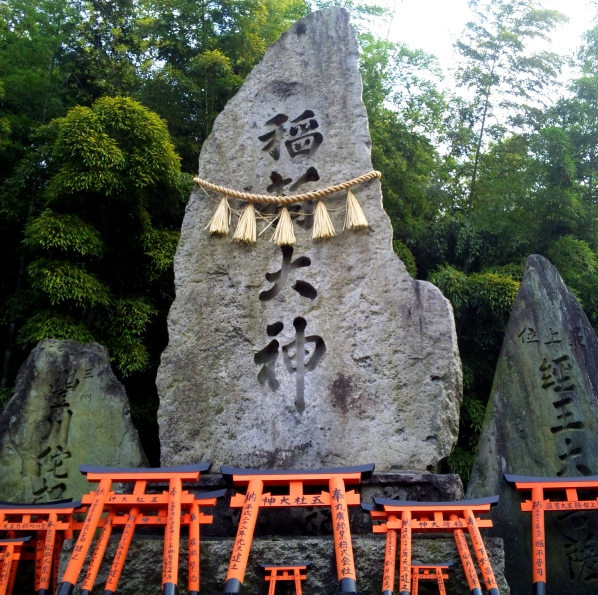
G
| Gaijin | Outside person,a foreigner |
| Gaikokujin | Outside-country person, a more polite term for foreigners |
| Gaiwan | Outer edge of arm |
| Gaeshi | To reverse (turn over, or against) |
| Gaku | Diploma or Certificate
|
| Gaku | Study |
| Gakusetsu | Theory |
| Ganbatte | Stick to it |
| Ganmen | The face |
| Ganseki | Boulder, large stone |
| Ganseki Otoshi | Boulder drop, an arm bar with elbow braced over the shoulder |
| Garami | To entangle or enwrap |
| Garami Waza | Entangling techniques in which opponents are locked into their own structure |
| Garyu | Lying Dragon |
| Gassho | |
| Gasshuku | Seminar or training camp |
| Gyakon | Pressure point on the radial nerve (LU), also Tekubi Osae, Gakun |
| Gedan | Low-level |
| Gedan Barai | Low-level sweep, particularly with a stick or polearm. |
| Gedan no Kamae | Low-level combative posture, sword pointed down |
| Gedan | Tsuki Low-level punch (below the solar plexus) |
| Gei | Art |
| Geijutsu | Art tactics or skills; fine arts |
| Geiko | See Keiko |
| Gekitai | To drive back an attack |
| Gekken | Severe Sword, fencing, sword combat |
| Gekon | Pressure point below lower lip (GV-26) |
| Genkan | Front porch or entrance-hall of any Japanese-style building |
| Genshin | Intuition |
| Gensoku | Techniques which illustrate principles |
| Genri | Principles |
| Gessha | Monthly dues or tuition |
| Geta | Platform zori, ones which have two risers on the bottom increasing height and making it easier to cross certain kinds of terrain. |
| Getsu | Moon |
| Gi | Skill, technique, an alternative pronunciation of waza |
| Gi | |
| Giri | Duty; an obligation to be paid. |
| Go | Five |
| Godan | Fifth Rank. A mid-high (black belt) rank in modern budo |
| Gogyo | Five elements (metal, earth, fire, water, wood) |
| Goho no Atemi | Practice form that combines each of our five basic upper and lower body strikes. |
| Gokaku Geiko | Practice between partners of roughly the same rank |
| Gokoku | Pressure point in fleshy area between thumb and forefinger (see Koko). |
| Gokui | Special or secret techniques taught privately to specific students |
| Gokyo | Fifth principle, in Aikido, Kuji Osae |
| Gokyo no Waza | Techniques (of the) five principles Judo's original organization of throwing |
| Gokyu | Fifth hill, the fifth level before shodan |
| Gomen nasai | Excuse me, I'm sorry |
| Go no Sen | Initiative after starting, a reactive state |
| Gyaku | Reverse, opposite, inverted |
| Gyaku Geki | Counter attack |
| Gyakukatate Tori | Reverse single-hand hold |
| Gyakukotegaeshi | Reverse lower-forearm reversal, a required Shoden technique. |
| Gyakute | Reverse Hand, holding a weapon with reverse grip |
| Gyakute Dori | Reverse hand taking, grabbing with a reverse grip |
| Gyakute Osae | Reverse hand press, an Osaekomi |
| Gyaku Uchi | Generic term for any reverse strike |
| Gyaku Tsuki | Reverse thrust, punching with the rear hand of a stance |
H
| Ha | Tooth
|
| Ha | Blade |
| Hacho | In Japanese design, the attempt to duplicate nature with deliberate asymmetry |
| Hachi | Eight
|
| Hachidan | Eighth Rank. An advanced (black belt) rank in modern budo |
| Hachikyu | Eighth Hill, the eighth rank before shodan |
| Hachimaki | Head wrap, headband |
| Hai | Yes |
| Hai | Lungs (LU ) |
| Haibu | Back (anatomical) |
| Hairi Kata | Forms of entry |
| Haishu | Back of the hand |
| Haito | Ridge-hand |
| Haiwan | Back of forearm
|
| Hajime | Start, begin |
| Hajimemashite | And so it begins, a greeting for new acquaintances |
| Hakkai Shiki | Opening ceremony of a school |
| Hakama | Divided skirt, similar to culottes, worn while practicing traditional Japanese arts; used as a sign of rank by some |
| Hakama Sabaki | Pant decisive motions (how to deal with your hakama so as not to impair mobility or access to weapons while moving, standing and sitting) |
| Hakkeyoi | Keep Striving
|
| Hakkoryu Jujutsu | Eighth Ray of Light-style Gentle Art. A modern budo founded by Ryuho Okuyama, based on Daito Ryu and Shiatsu principles |
| Hakyo | Eighth principle: (Kote Ori Kake Kimi, Kuji Dori)
in Aikido, nikkyo with UKE's elbow in TORI's armpit, often pinning the
hand with a foot.
|
| Han | Half |
| Han | Clan, family or fief |
| Hana | Nose
|
| Hana | Flower |
| Hanabishi | Diamond Flower (used in Mon) |
| Hanashi-waza | Techniques involving escapes from holds; also known
as Hazushi Waza
|
| Hando no Kuzushi | Breaking an opponent's balance using his/her reaction. |
| Hankai | Half-turn |
| Hanko | A "chop" or seal stone used in Japan in place of a signature. |
| Hanmi | Half-body, a half forward stance |
| Hanmi-handachi | Training in which TORI kneels, and UKE stands. |
| Hanpuku Geiko | Training repetitively, using a limited number of waza and drilling them. |
| Hanshi | A certificate rank, properly not used as form of address. |
| Hantai | Opposite |
| Hantai | The other way around |
| Hantai ni | In the opposite direction |
| Happo | The eight sides; in all directions
|
| Happo-baraki | Eight direction sweep, to be totally aware of ones surroundings |
| Happo no Undo | Eight direction exercise, cutting and turning in the eight 'cardinal' directions |
| Happyo | Announcement of exam results |
| Hara | The abdomen, stomach, thought to be the the center of the mind |
| Hara Gatame | An arm bar performed using TORI's hara |
| Harai | To sweep or reap |
| Harai Goshi | Sweeping hip |
| Hara Kiri | To slice the belly, an extremely rude term for seppuku (ritual suicide) |
| Hari | Needle |
| Hari | Needle skills, acupuncture |
| Hasso no Kamae | Figure 8 stance, sword by side of head |
| Hasuji | Blade positioning/angling |
| Hayaku | Quickly |
| Hazushi | Avoidance or evasion |
| Hebi | Snake |
| Heiko | Parallel |
| Heiho | Strategy, psychology, tactics |
| Henka | Variations |
| Henka waza | Variation techniques, changing techniques to be appropriate to specific situations. |
| Hera | Peg in back of hakama, inserted in turns of Kaku-obi to prevent koshita from sliding. |
| Hi | Spleen (SP) |
| Hidari | Left |
| Hiden | Secret, not public |
| Hifu | Lung Air (skin) |
| Hiho | Secret methods |
| Hiji | Elbow |
| Hiji Age | Rising elbow |
| Hiji Ate | Elbow strikes |
| Hiji dori | Elbow taking (grab) |
| Hiji Garami | Elbow Entangling |
| Hiji Uke | Elbow Receptions |
| Hiji Zume | (To) stuff the elbow, Ude Osae, Aikido's Ikkyo |
| Hiji Zume | Atemi point on inside of elbow |
| Hijoji | Emergency |
| Hijoji Tetsu Da | Emergency fall hit medicine (treatment for martial arts injuries) |
| Hiki | Draw; Pull |
| Hiki Nage | Drawing Throw |
| Hikite | Pull hand, knobs or pulls on drawers or doors |
| Hima | Forehead |
| Himo | Cords or ties found on Keikogi |
| Hineri | Twist |
| Hiragana | Japanese phonetic alphabet used to spell indigenous Japanese words |
| Hishi | Diamond |
| Hitai | Forehead |
| Hito e mi | Blending with motion of attack |
| Hito-emi | Equal stance, feet parallel forward |
| Hitori waza | Invisible partner practice, shadow boxing |
| Hiza | Knee |
| Hiza Ate | Knee strikes |
| Ho | Direction, corner |
| Hiza Garuma | Knee Wheel |
| Hojo Jutsu | The art of binding (knot tying etc.), found in many classical-era systems |
| Hoko | Walking or stepping |
| Hombu | Home Dojo, head office of an organization |
| Hon | True or original |
| Hone | Bone |
| Honesei | Bone setting (also honesetsu) |
| Hontai | True body, the unattached and aware state of a trained warrior |
| Honte | True hand, grasping or holding in a natural grip (often the opposite of gyakute) |
| Hyoshi | Timing |
| Hyoteki | Target area |
Visitors are
welcome, by appointment, as are beginners and guests. To
schedule an
interview,
please
E-mail or
call us 617.501.3446.

